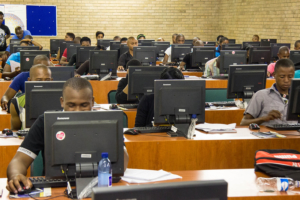5G Wireless to Improve Education in Rural Areas

The COVID-19 pandemic has impacted the world in many ways. Not only has the pandemic generated a loss of life and economic growth, but it has also shifted social dynamics. One of the most affected sectors has been education. Today, more than ever, education is dependent almost entirely on internet access or wireless cellular network coverage. Unfortunately, 51% of the world population lacks access to the internet. Many of those without internet access live in rural areas and low-income regions. In most cases, these areas lack investment in key infrastructure such as internet access. Fortunately, 5G wireless has the potential to guarantee a fast and efficient connection. The subsequent increase in access to high-speed internet will likely spur socio-economic growth worldwide, especially in rural areas.
Efficiency and Cost Reduction
The 5G network enhances WIFI capabilities; it is 10 times faster than any average WIFI network and has 100 times more capacity than 4G. The pandemic and the uptick in remote education have intensified the need to improve internet access. 5G Technology can take homeschooling to another level as it can eliminate the downside of face-to-face classes. The changing demands of the world’s population is an opportunity to transform rural communities through technologies, such as 5G wireless. Previous generations of wireless aimed to revolutionize the mobile phone sector. 5G, however, can deeply transform a wide range of industries.
The use of 5G will allow students immediate access to educational content without the common hindrances of Wi-Fi connectivity. The students will be able to enjoy a completely new form of education. Technologies that 5G powers, like virtual reality, could provide immersive experiences to develop professional skills. 5G wireless would improve the range and quality of educational activities and teaching methods. These improvements will not only expand the students’ educational experience but also their capabilities.
Many rural areas face teacher shortages and a lack of proper classroom equipment. This leads to a discrepancy between the quality of education in rural and urban schools. 5G would reduce the quality gap in education due to its universality. No matter where a teacher and their students are located, 5G can transmit the lesson quickly and clearly. For these reasons, 5G will work as a social equalizer by reducing the access cost of educational information and improving classroom technologies.
The Need for Public-Private Partnership
It has become clear that 5G can ameliorate the economic and social repercussions of the educational divide. However, this solution to a systemic social issue is only feasible when the public and private sectors collaborate. This partnership is necessary to equitably implement this new generation of broadband across both urban and rural areas. The ultimate goal is to evenly provide 5G coverage to remote areas around the world. India, for example, has prioritized its digital agenda to provide broadband connectivity in rural areas and communities that will benefit from digital inclusion.
The Indian Government, through the Department of Telecom (DoT), has been working on an action plan for the installment of 5G wireless services. The DoT has joined key stakeholders specialized in the industry to develop an ecosystem feasible for 5G commercialization and application. The government is promoting partnerships to guarantee innovation through a regulatory environment that incentives investments in the necessary infrastructures. The parties involved acknowledge that the shift toward 5G is crucial for the modern age. This technology will reduce the digital divide and the urban-rural educational gap while also producing growth and innovation.
5G as a Social Equalizer
All students in the world, regardless of their circumstances, need quality education to ensure a higher quality of life. 5G wireless is an innovative solution that can generate a dramatic impact. This network has the power to improve the quality of life for rural communities by guaranteeing opportunities for educational growth and general economic development. This means that 5G wireless can connect everything and everyone, and students can have access to all the tools necessary to succeed in several areas of interest.
For widespread 5G wireless to become a reality, government bodies and stakeholders must ensure a sufficient level of investment in national infrastructure to make the possible societal improvements a reality. The use of 5G means closing the urban-rural educational and digital gap and reducing poverty and insecurities. It is a social equalizer that will enable a smooth learning experience for students in rural areas who yearn for a better future.
– Isabella León Graticola
Photo: Flickr
